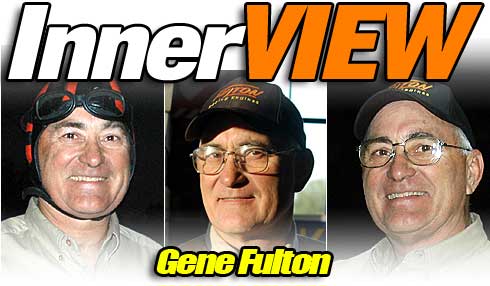
11/8/2007
Gene Fulton’s name has become synonymous with big-time, nitrous-fed horsepower. His client list from over the years reads like a who’s who of championship-caliber racers such as Scotty Cannon, Quain Stott, Shannon Jenkins, Jim Halsey, Jack Barfield, Gil Mobley, Steve Kirk Jr., Kyle Heuttel and Mike Hill, to name just a few.
A native South Carolinian, Fulton grew up about 30 miles north of Fulton Competition, the race shop he’s occupied since building it in 1974 just outside Spartanburg. He joined the Air Force upon graduating from high school in 1966 and served as a C-130 loadmaster the next four years, traveling the world from bases in Dallas and Abilene, TX, and Honolulu, HI.
After honing his mechanical skills by making use of base auto shops to work on his own and friends’ cars, Fulton returned home late in 1970. By early the next year he was already tearing up dragstrips as a driver and tuner throughout the Carolinas and neighboring states. His first race car was a 1963 Chevy II station wagon picked up in Texas on his way home from military service. That car did so well on the track, Fulton says, that its winnings entirely paid for the construction of his race shop and first house.
The car met an untimely end in 1978, however, in a devastating racing crash at Bristol, TN. Though a total write-off, Fulton just couldn’t bring himself to send the wagon to the junkyard, opting instead to give it a proper burial behind his shop, with its final resting place marked by a real gravestone. “It had been good to me,” he says. “It actually paid for my whole place here, so I figured it owned the place as much as I did.”
Fulton Competition is fronted by a non-descript brick building in which gleaming billet blocks, heads, intakes and crankshafts come together to create some of the most prodigious engines available, including a monster 870 cubic incher. Out back there’s a second squat building fitted with several bay doors and an engine dyno at one end. And everywhere, it seems, there are historical reminders (photos, signs, mementos, etc.) of Fulton’s past and present obsessions.
For instance, in addition to race memorabilia there are several tributes to his off-track passion for flying and parachuting, including base jumps with his brother, Danny, from a bridge in Virginia a few years back. Fulton owns four traditional, single-engine aircraft and three ultralights and often takes friends up for rides, some who go with the full intention of jumping out at altitude. Fulton says he’s made “about 1,000” jumps himself and proudly states he’s never tasted a drop of alcohol, never smoked a cigarette or taken illicit drugs, and doesn’t chase “wild women,” but still lives life to its fullest.
Fulton’s tastefully decorated home sits on 80-plus acres just a few short miles north of the race shop with a large fiberglass cow and amusement-park bear standing guard near the front door. The house is accompanied by a private, grass airstrip, three aircraft hangars and a spacious home shop for Fulton to work on his many private projects. There’s a 350-powered T-bucket built by Fulton in 1973, a tube-frame dune buggy welded up in ’79 that he’s since driven to Florida “at least seven or eight times,” and a late-‘60s Rolls Royce recently restored “Fulton style” with Holley four-barrel induction and all-Chevy brakes among the practical upgrades.
A truly unique individual, Fulton, 59, recently spent an evening with DRO, recounting his career, sharing opinions of several racers and rivals and what he thinks the future will bring to engine building and drag racing in general.
![]() When did you get into racing as a business?
When did you get into racing as a business?
Fulton: I started racing in ’71, spring of ’71, and had a good reputation right off the bat and I started working on other people’s engines and stuff in my daddy’s yard under an old oak tree. I was truly a shade-tree mechanic.